Most fish look like each other at first glance, but there’s no mistaking a catfish. Covered in skin rather than scales and barbels coming out of their mouths they’re easily recognizable. However, there are a few different species that you’ll have to sort through.
Identifying a Catfish
Members of the catfish family all have barbels around their mouths. Like a cats whiskers, they use these barbels to feel their way around the environment looking for food. They literally taste their way around the lake floor chowing down on anything that comes through their path.
They’re also one of the few species that have a skin rather than scales. They can actually taste food through their skin earning the nickname “swimming tongues” (never actually heard someone say this, but you’ve gotta trust wikipedia)
Sport Fishing
Due to their sheer size and strength catfish are growing in popularity among
With an excellent taste and tackle-busting fight they make for one hell of a sport fish. Just make sure you learn how to properly handle them.
Handling a Catfish
Doesn’t matter what type of catfish species you’re going after they all need to be handled the same way. Make sure you’re careful around their pectoral and dorsal fins. The spines are sharp, especially on younger catfish, and will really tear through your hands.
Getting stuck with a catfish fin definitely won’t be fatal, but it’s going to get nasty fast and be extremely painful. Make sure you bring along a first aid kit and treat your wound immediately before you get an infection(check out my first aid kit).
Catfish Don’t Sting
There’s a common misconception that catfish sting, but that’s simply not true no matter the species. Can’t even count how many times I’ve been told “Catfish Sting” and it’s starting to get a little old. Catfish whiskers/barbels and fins don’t sting, but that doesn’t mean you just want to grab them.
Catfish Whiskers are Harmless
Catfish whiskers are harmelss, they’re soft to the touch and very pliable. Touching them might be scary, but it’s no different than touching the whiskers on a cat.(grabbing a cat by the whiskers might not be a good idea)
Watch The Fins
The biggest areas of concern are the dorsal and pectoral fins. There’s a hard spine that runs through them that will quickly tear through your hands. These spines actually contain a venom that causes swelling when it punctures the skin.
Small Catfish are More Dangerous
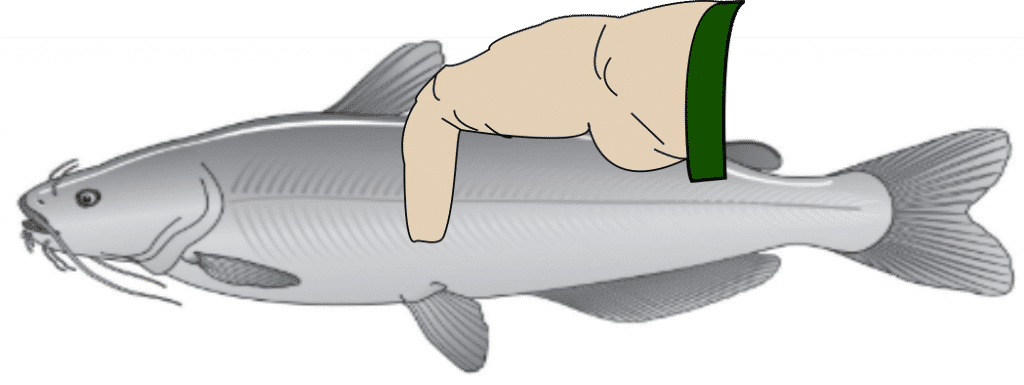
When grabbing a small catfish you’re going to want to grab him from the top directly behind the top dorsal fin. Rest your hand behind the dorsal spine and really wrap your hand around him. As the fish gets larger you’ll have a hard time controlling him this way.
Grabbing Larger Catfish
If the catfish is bigger than 8 pounds you aren’t going to be able to get your hand around him. With a bigger
Blue Catfish
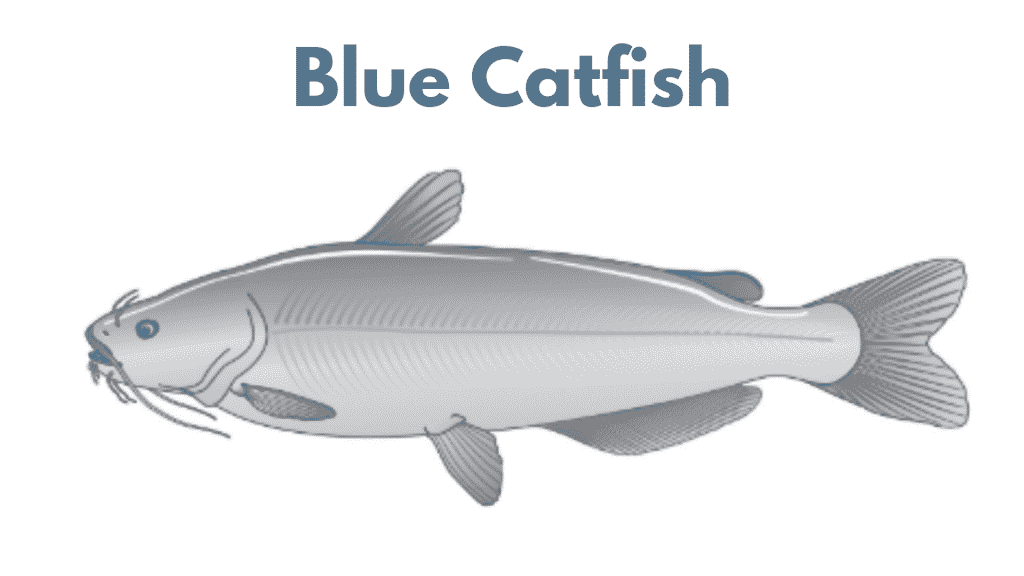
- Huge Muscular Body
- Can Exceed 100 lbs.
- Gray/Blue to White(Sometimes Darker)
- No Spots
- High Fin with Straight Anal Fin
Identifying The Blue Catfish
Blue cats are really easy to identify. They’re one of the largest species in America and aren’t going to have any spots. With white bellies and a slight gray appearance they’re immediately recognizable.
Notice the big broad shoulders of the Blue Catfish. Built for strong running water these bad boys have a large muscular body. They range from gray/blue color to white without any spots(rarely darker) Notice the straight anal fin along the back of his body.
Blue catfish are the real kings of every big river(found in some reservoirs). Blue cats thrive in those big east coast rivers. Ohio, Mississipi and Missouri river all hold monster Cats.
They feed primarily on shad and herring and can get bigger than most of us can physically hold. Try dragging a 100+lb catfish out of the water and get back to me.
Brief Lifespan
Blue Cats typically spawn late in the spring going into early summer, whenever the water temperatures reach 75 degrees. Their nest sites are in the darkest parts of river, tucked away behind overhanging trees, riprap and logs. Those big angry males guard the nests attacking anything that approaches.
Blue Catfish aren’t sexually mature until they’re over 2 feet long. With such a big body they’re natural predators in most rivers across the country.
Feeding primarily on other small fish they grow fast and are usually about 20-40 lbs, but they can grow up to 100 lbs. Even small 3-4 inch catfish are able to consume small baitfish.
Where to Find Blue Cats
You can find blue catfish in most major rivers. Doesn’t matter if you’re in the main river or small tributaries there’s going to be a few big cats. With such big bodies to regulate they tend to move towards cooler water in the warmer months and head back for warm water nearing winter.
They can be found along all the major river systems around the Ohio, Mississippi and Missouri Rivers. You’ll even find them out towards Texas and Mexico.
What to Expect
Since blue cats are big fish found in big rivers most fisherman fish from boats using heavy catfish rods. Just drift downstream with chunks of cut bait and you’re sure to find some big blues.
You can catch blues all day long spring, summer, fall
They’re one of the biggest fish in North America and they sure fight like it. They live in strong fresh water currents and grow fast.
How to Fish For Blue Cats
With such a big fish you’re going to need a sturdy catfish rod. Catfish feed on the bottom so that’s where you want to target. They do suspend higher in the water column, but it’s much easier to target the bottom. Water depth doesn’t matter they can be caught in both shallow and deep water.
Although catfish can be caught on artificial lures most guys prefer live bait. Anything with a strong scent trail works well. Blue cats are opportunistic feeders and will pretty much eat anything in front of their face.
High Fin Blue Catfish
Have you ever heard of the High Fin Blue Catfish? A particular species with a higher dorsal fin than traditional catfish. Many anglers argue that the high fin is a different fish, but it’s simply not true.
There’s no such thing as the high fin blue catfish, well there is, but it’s not what you think. You don’t have two different species of blue cat. You might see one with exaggerated features, but it’s not a different breed.
You can line up a dozen fish and they’ll all look different depending on the body of water, their forage and age. Some have bigger fins, while others don’t it’s just the way the fish grows.
Channel Catfish
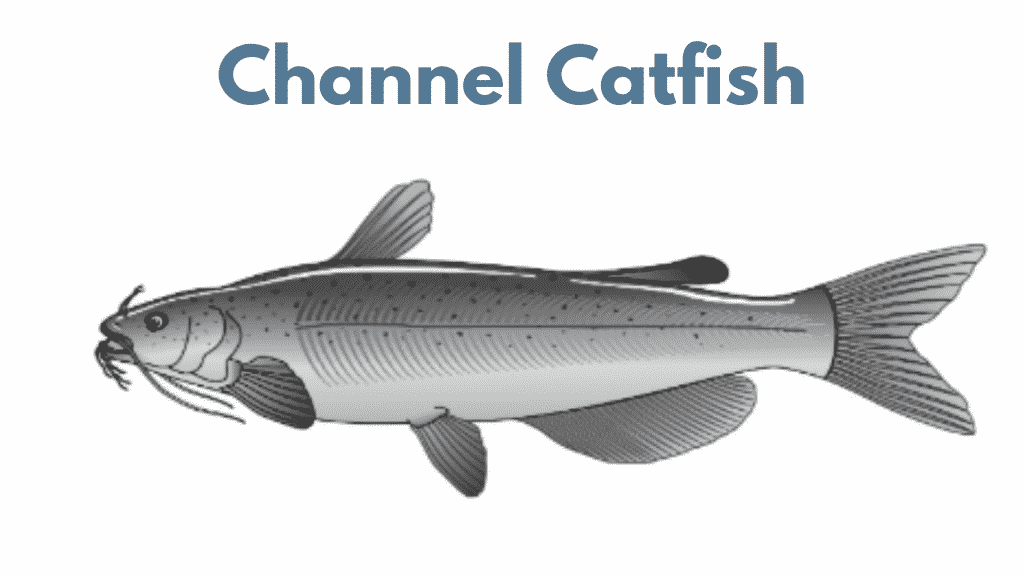
- Extremely Popular Gamefish
- Farm Raised and Excellent Taste
- Olive Brown and Gray with dark spots
- Curved Fork Tail
- Rarely Exceeds 30lbs
Channel Catfish taste absolutely amazing and that’s why you see them in fish farms across the country. Seems like every restaurant across the south serves
Inexperienced fisherman
You can differentiate the two species by looking at the tail. Channel cats have a deeply forked V-Shaped tail, whereas flatheads have a shallow curve in the tail.
Brief Lifespan
Just like the above blue cat channel catfish spawn in the late spring goin going into the early summer. They start to spawn whenever the water temperature reaches 75 degrees.
Look for large 30lb males guarding nesting sites in dark secluded areas. Underneath trees, behind rocks and beneath laydowns, if there’s cover you’ll find catfish.
Channel cats will eat just about anything you throw at them. Completely omnivorous they’ll eat meat, insects, plants and fish. They start to breed at a small size, which maes them perfect for farm life.
What to Expect
Just like the blue catfish, channel cats can be found in every large stream, river and lake throughout the united states. From shallow water streams to deep lakes it doesn’t matter.
They’re extremely adaptive and can be found everywhere from the biggest river to the smallest stream. Doesn’t matter where you go you’ll find a few channel cats.
How to Catch Channel Catfish
Honestly, it’s hard to catch one species of catfish over the other. Where
Channel cats make for some excellent fishing, they hit hard and fight long. They’ll out pull just about every other fish in the lake(well maybe not a monster blue).
They literally feed on anything they can find. They chow down on everything from fish to insects. That’s why they grow so fast. If you don’t have a prepared stinkbait head to your local grocer and buy hot dogs and cheese.
Doesn’t matter what you use, worms, crawfish, raw meat, natural baits you’re going to have success. Most guys like making their own dip bait, but there are commercial varieties available
They hit day or night and can be found in fast current or motionless ponds. You probably won’t catch a channel cat over 20lbs, but boy will it give you a fight.
Flathead Catfish
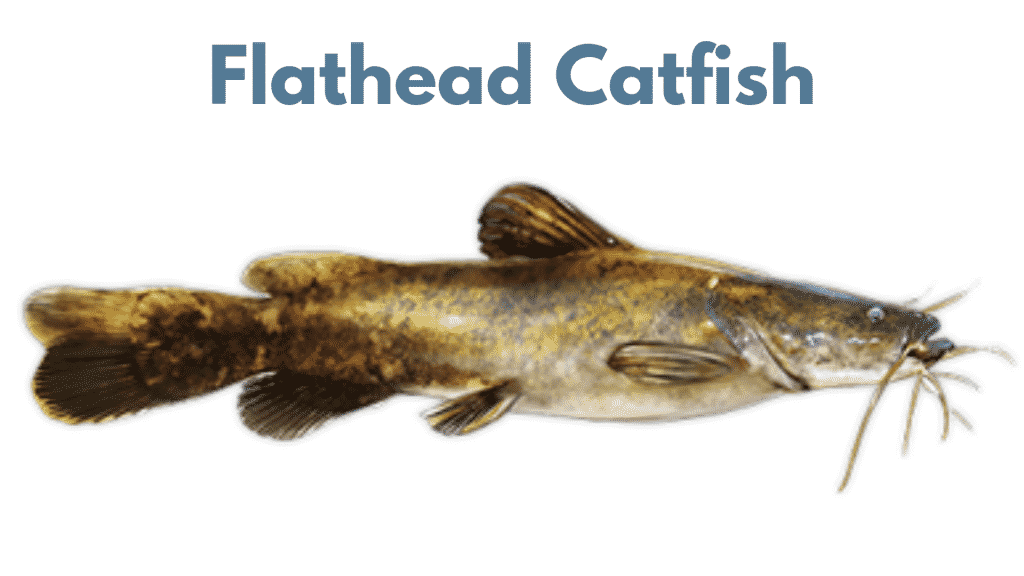
- Black Brown and Yellow
- Dark Spots
- Can Exceed 100 Lbs
- Flatter Tail (No Fork)
Just like the blue catfish, Flatheads can weigh in excess of 100 pounds. They can be found throughout most of America’s big rivers, lakes and reservoirs. However, they’re known more for tolerating muddy water whereas blues stick to clear water. Of course there are some exceptions.
I’m always amazed at the Flatheads I pull out of surprisingly small streams. You can find a 40lb Flathead in streams that look more like a glorified mud pit.
Flatheads are a really popular species since they can be found across the entire United States. They taste great and you can easily find monsters wherever you are.
As the flathead name suggests you can identify them by their “Flat Head” and brown spotted body. While it might look like a standard channel cat at first glance look for the Un-Forked tail.
Brief Lifespan
Flathead catfish only prey on live fish, unlike Blue and Channel Cats who will eat literally anything. While the young feed primarily on crayfish, worms
They spawn at a higher water temperature than most other species of catfish. Often going into the middle of summer when the water temperature approaches 78-80 degrees. Spawning season runs from May-August depending on your location.
You’ll most often find males guarding their nests near undercut banks, hollow logs and fallen trees. If there’s a warm dark hole there’s a good chance it harbors a big catfish. They’ll even dig even deeper if the holes not deep enough.
It really is important to release bigger flatheads back into the river after catching them. I know they taste great, but it’s those large females that release the most eggs. Every pound they gain means more eggs and future cats.
How to Catch Flathead Catfish
Finding and catching flathead catfish really isn’t all that hard. Go to your favorite lake and look for those dark shady spots underneath trees and undercut banks. Whenever you see a hole there’s bound to be a catfish lurking inside.
During the day they hide around submerged logs, driftwood, toppled trees and small cavities, only coming out to the shallows at night to feed. They are made to chase baits like their cousins, you’ve gotta get up in there.
Whatever you do don’t drop dead bait. Due to their sheer size people are under the misconception that flatheads eat anything. Juvenile fish might hit stinkbaits, worms and crawfish, but the big guys won’t. The only thing the big boys eat is live fish.
Good choices include bullheads, carp, goldfish and sunfish. Just remember goldfish are an invasive species so try not to let them get away.
Bullhead Catfish
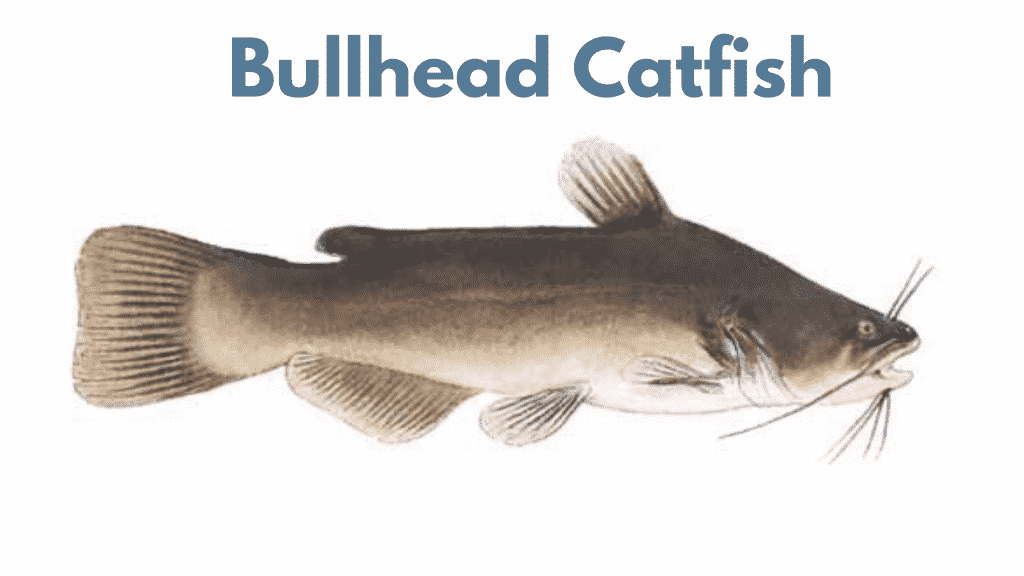
- Small but Tough
- Tolerant of Low Oxygen Levels
- Rarely Exceed 6-8lbs fully grown
Bullheads also called “Pollywogs” “River Cats and “Mud Cats” are extremely common. Bullheads can survive almost anything, if there’s ever an apocalypse get out your bullhead gear.
You probably aren’t mistaking bullheads for their bigger cousins. They’re just so small with an obvious body shape. There are different species of bullhead, brown, black, yellow, but they all act the same.
Being so small they mainly feed on small fish, insects
Brief Lifespan
Due to their smaller size bullheads spawn a little bit earlier in the season. They usually spawn between June and July when the water temperatures reach 70-80 degrees. The eggs hatch fast and the young stays with its parents for a few weeks before venturing out.
- Black Bullhead: Blacks are the most common species of bullhead and also the smallest. These little guys can single-handedly support a large bass population. They rarely live past two years old before getting eaten.
- Yellow Bullhead: Yellows are slightly larger in size, but they’re less hardy. They prefer a lot of vegetation hanging around cattails and tall grass. You rarely find yellow bullhead in a lake with other varieties.
- Brown Bullhead: Brown bullheads are the larges, but they still don’t grow bigger than 7-8lbs on average. You’ll find brown bullheads scouring the bottoms of deep rocky lakes working as the clean up crew.
How to Catch Bullheads
Just about every pond in the United States is going to have Bullheads. They’re one of the heartiest fish and need little oxygen and food to survive.
There are loads of bullheads and they can easily be caught on a hook and line. They will eat literally anything you throw at them. Though it’s fun trying out weird baits I normally stick to plain old nightcrawlers.
- Prepared Dip Baits
- Minnows
- Worms
- Leaches
- Hot Dogs and Cheese
- Soap
- Beans
- Cut Bait
Remember that bullheads need a lot of food to spawn. So they go wherever they can get an easy meal. I’ll mostly fish around choke points, bridges, ends of streams, anywhere that brings a constant food supply.

